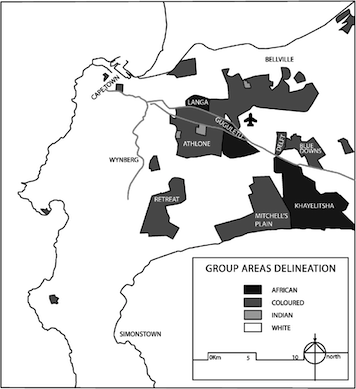
Moving away from the "Silicon Valley" startup narrative in Africa
By Wisani Shilumani, MBA student, UCT Graduate School of BusinessTranscending simulations of technology businesses from developed countries in emerging countries — the South African case.
The key to economic growth lies in our ability to become more productive. Using technology, we can find ways to increase the ratio of our economic output to the inputs they require, and therefore increase productivity.
In the past two decades, the technology startup businesses that supplied a large unmet demand, and continued to innovate to meet this demand in a sustainable and scalable fashion, soon found themselves generating billions of dollars in revenue. These giants became the talk of the year and were celebrated in popular business columns across the world.
What made these businesses unique, compared to their brick-and-mortar predecessors, were the low operational costs of their business models and their ability to scale in both user/customer volume and geographic reach.
Businesses like Netflix or Facebook, unlike Walmart, for example, were able to increase volumes and reach foreign markets in a matter of hours at negligible costs.
Many of these startups were born and clustered in Silicon Valley, a region in Northern California that served as a center for technology and innovation in the United States. Prior to its fame, this region was a mostly undisturbed agricultural valley. Due to war-time activities, as a consequence of World War II, California’s economy was stimulated and saw an inflow of aviation and electronics companies into the region.
War-time funding from the federal government directed towards Stanford’s laboratories in California’s Santa Clara County would later see the county becoming the capital for the semiconductor industry, ultimately earning it the name “Silicon Valley”.1
The semi-conductor industry carried a large potential for intra-industry diversification, which economists like Ricardo Hausmann argue is a path for economic growth.2
This opportunity for diversification from the semi-conductor industry contributed to the incredible success of a diverse set of new technology businesses. These included software and hardware companies like Google and nVidia, to as far as electric vehicle companies like Tesla. This success was the genesis of the Silicon Valley startup narrative.
The Silicon Valley startup narrative
The celebrated stories of highly successful Silicon Valley companies like Apple, Google, Netflix, and Airbnb, to name a few, in many ways, defined what it meant to be a technology startup.
Popular startup literature like The Lean Startup and Zero to One had collectively sold over 3.5 million copies respectively by 2012.3,4 Both were written by American authors. Other popular media consumed by startup entrepreneurs in the form of podcasts, or videos, such as the Y Combinator series, the Stanford GSB series, or the Masters of Scale podcast were all produced and narrated by Americans.
The school of thought around startup entrepreneurship was indeed led by American authors, who, to their credit, had founded and led successful businesses. The issue with this narrative, however, was that it led both investors and founders across the world to see it as the blueprint for new technology businesses.
Startups across the world thus appropriately assumed a “one size fits all” approach. This approach largely revolved around B2C (business-to-consumer) models and by extension, a hyper-obsession over consumer needs.
To its defense, this customer-obsessed approach was created in a wealthy and developed country with a large and high-consuming population that was supported by strong institutions, good infrastructure, and investor confidence.
In 2008, the year that saw the founding of post-recession startup giants like Whatsapp, Instagram, Uber, and Airbnb; the United States had a population of 326 million (44% of which lived in large urban agglomerations) and an income per capita of $40,046.5
In contrast, emerging countries like South Africa were home to informal markets, poor infrastructure (outside of metropolitan areas), a lack of strong institutions, and a lack of investor confidence. In 2008, South Africa had a population of 50 million (32% of which lived in large urban agglomerations) and an income per capita of $4,451.
Ironically, and hidden from the eyes of South African startup entrepreneurs like myself who were influenced by the American startup culture: emerging countries like South Africa had the greatest potential for an increase in productivity, and therefore sustainable economic growth.
Seeing the Opportunity
Adopting an African approach to startup entrepreneurship
If economic growth lies in our ability to become more productive, then we can see how developing countries carry a larger potential for growth.
A South African subsistence farmer equipped with a tractor can become significantly more productive.
An American farmer, tractor existing, given new technology like Virtual Reality, the metaverse, or blockchain technology, would realise diminishing returns on productivity.
The startup culture in South Africa needs to move away from one that assumes an existing large and urban-based strong consumer market, to one that focuses on the following:
- Increasing economic output in existing markets
- Building capabilities that bypass infrastructure; and either bypass or strengthen institutional capabilities
The barriers to economic output and productivity in South Africa
To do well as South African technology startup entrepreneurs targeting local markets, and to create billion-dollar-revenue generating companies of our own: we need to start seeing the full picture of our emerging economy outside of the developed cities we live in. Subsequently, we need to be able to see the barriers to economic activity and find ways to overcome them.
I believe that the barriers to economic output in South Africa can almost always be linked back to the transaction costs of economic activity. Transaction costs are all the costs associated with buying a good or a service, excluding the price of that good or service.
For example, buying a second-hand good might incur costs through the time spent searching for a quality product, driving to an agreed location, paying for parking, time spent negotiating, extra precautions of keeping cash on hand, and damages incurred from bad roads.
I believe that the barriers to economic output, that cause transaction costs in our economy are as follows:




There are great opportunities in existing areas of high economic activity. The task of innovation is increasing the economic output per economic input in those areas - and doing so in a way that is operationally light and bypasses poor infrastructure and institutional support. In this way, with the goal of increasing revenue, models can scale outside of the country into other emerging markets that could have even poorer infrastructure and institutions.
A framework for identifying opportunity
The first step for starting a business is identifying an opportunity. To identify opportunities, there are parts of our mindset that we might need to adjust, however, a good starting point is knowing where to look for opportunities.
An easy place to look for opportunities in emerging markets is the places where economic activity is already happening. We can then look at these areas with a curious and opportunistic lens: What’s making business difficult in those areas? What limits the economic output?
The difficulty here, given the Silicon Valley ethos of startups, is identifying the limitations from a B2B point of view (where foundational solutions are usually needed in emerging markets), instead of the immediately visible B2C point of view. To avoid throwing the baby out with the bathwater, this is not to suggest completely abandoning B2C models.
The key here is avoiding being in the mode of “invention”, but rather being in the mode of “innovation.” Problems in emerging markets are plenty — the trick lies in finding feasible ways of solving them with often existing ideas.
A positive outlook
Where we find ourselves advantaged as entrepreneurs in African countries, is in not having to invent complex technologies that are, at the core, solutions looking for problems; which is often true in economies where the supply is over-saturated and reaching its limits of efficiency.
We are instead challenged with an active economy that is slowed by inefficiencies that technology can quite easily solve. Our mission as entrepreneurs in South Africa, is to identify these challenges and the opportunities they present, and use the available know-how to build successful companies of our own around them.
1. Saxenian, A. (1978). The genesis of silicon valley. Alexandrine Press, 9(1), 7–17.
2. Hausmann, R. (2015). Ricardo Hausmann on Growth, Inequality and Preventing the Next Financial Crisis. Harvard Kennedy School, December, Available at https://www.hks.harvard.edu/centers/mrcbg/programs/growthpolicy/ricardo-hausmann-growth-inequality-and-preventing-next (Accessed 14 March 2022).
3. (2011). Hardcover Advice & Misc. The New York Times, 2 October, Available at https://www.nytimes.com/books/best-sellers/2011/10/02/hardcover-advice/ (Accessed 13 March 2022).
4. Masters, B. (2012). Notes Essays—Peter Thiel’s CS183: Startup—Stanford, Spring 2012. Blake Masters. Available at https://blakemasters.tumblr.com/peter-thiels-cs183-startup (Accessed 13 March 2022).
5. The World Bank DataBank (2022). World Development Indicators. Available at https://databank.worldbank.org/source/world-development-indicators (Accessed 12 March 2022).